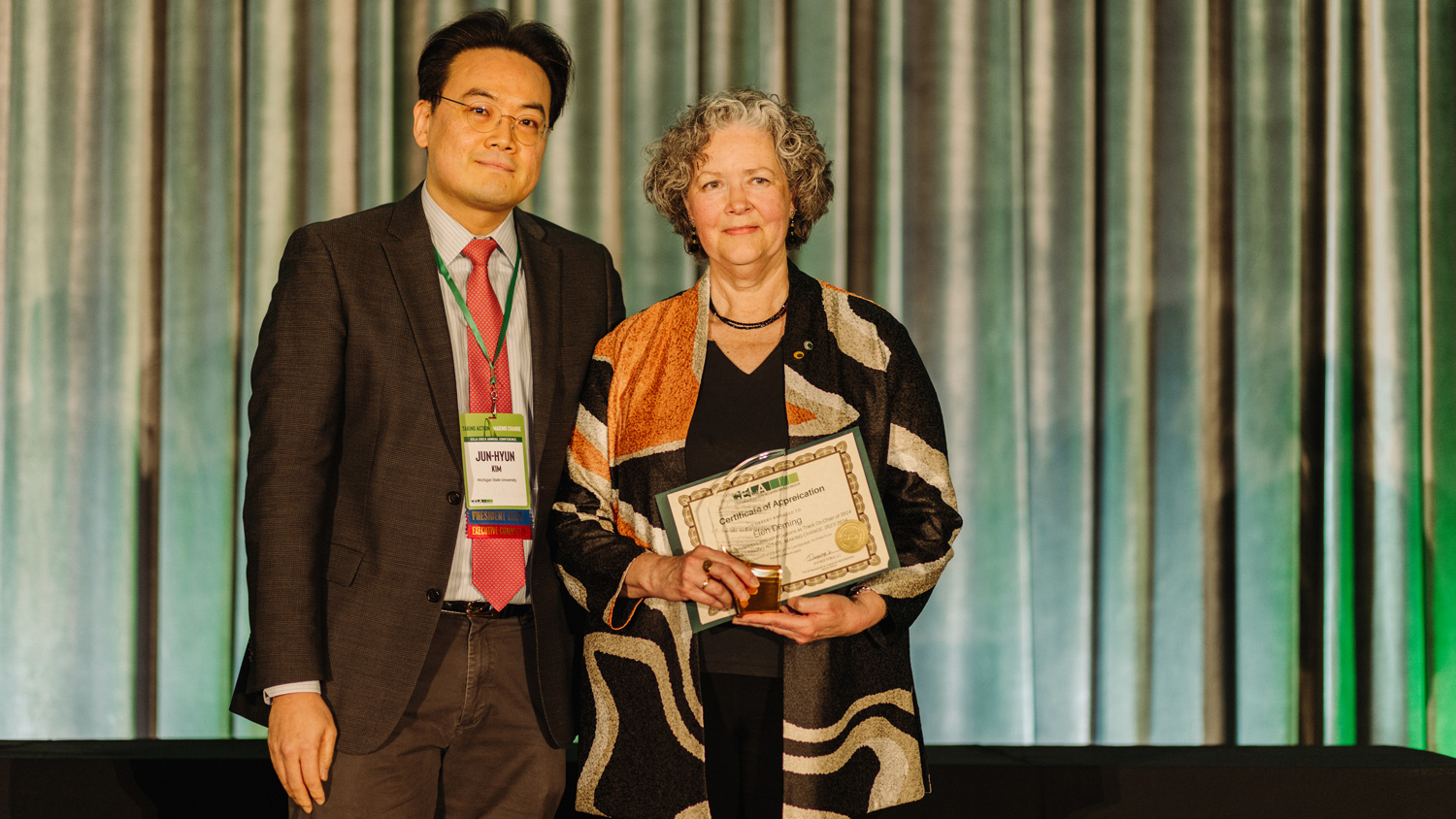Distinguished Professor Emeritus of Art + Design Susan Brandeis

“For me, teaching was a calling,” states Distinguished Professor Emeritus of Art + Design Susan Brandeis. For more than 35 years, she has been sharing her passion, know-how, talents, and wisdom for all things creative at the College of Design. She is an unforgettable teacher, and her continued relationships with alumni are a testament to her influence. “There is nothing better for me than to have these students be enthusiastic about what I am teaching and to have the lightbulbs go on as they say, ‘I never realized that before.’ This is a huge gift.”
Alums from the ’80s and ’90s, as well as current students, attended a recent solo exhibition of Brandeis’s work at the Cary Arts Center. “I have a firm studio practice and I love that, but the reward for me is that I love the students,” she shares. “I see teaching as a lifelong personal relationship.”
As early as 7, Brandeis was stitching, knitting, and crocheting. During her undergraduate experience, she realized she could do this for a living, which led her to pursue master’s degrees in fine art in textile design from the University of Kansas and art education from Indiana University. “In my bones, I knew I wanted to teach. The symbiotic relationship between learning and teaching, and between making and teaching others to make, is really important to me,” she emphasizes.
“The symbiotic relationship between learning and teaching, and between making and teaching others to make, is really important to me.”
Brandeis was pivotal in developing the fibers and textile program at the College of Design. She was offered a full-time position by Professor Emeritus of Art + Design Charles Joyner. “I was lucky. I worked extraordinarily hard for a lot of years,” she says. “I knew what kind of program I wanted in this context, broad and flexible, so that students—whether they wanted to apply their skills to art, craft, or design—had a place here.”
The fibers and surface design program flourished under her efforts and guidance. The program has experienced tremendous growth since the days when the only resources were two print tables and a couple of looms. “One of the things I felt was important for the fibers and surface design students over the years was to have firsthand access to historic examples of textiles,” Brandeis states.
This dedication to exposing students to “real objects” and providing “as much ammunition for their creativity as possible” resulted in a more than 20-year relationship with the Gregg Museum of Art & Design. “[Museum staff] worked with me to build a collection that I can use to teach the World Textile seminar from real objects every week,” she explains (to read about the Gregg museum, see story on p. 33).
Additionally, Brandeis was a founding faculty member of the former Anni Albers Scholars Program, a dual degree with the College of Textiles that offered degrees in Art + Design as well as Textile Technology.
The special topics and techniques taught by Brandeis are vast. She has expanded her craft through exhibition, lectures and seminars, writing, and research. From screen-printing, surface embellishments, embroidery, dyeing, and design fundamentals to a Pre-Industrial World Textiles Seminar, she has shared her passion with students of all levels. “I am not a cognitive teacher; I am intuitive. I listen to the student and watch carefully and see what information they are ready for, because nobody learns until they are ready for the information,” she says.
“I listen to the student and watch carefully and see what information they are ready for, because nobody learns until they are ready for the information.”
Throughout, Brandeis has maintained a constant and somewhat hectic pace. She has taught summer courses at Penland School of Crafts, Arrowmont School of Arts and Crafts, Haystack Mountain School of Crafts, and Oregon College of Art and Craft, among others. She is the recipient of three visual arts fellowships
from the North Carolina Department of Cultural Resources, has published numerous articles, and is the
founder of the Southeast Fibers Educators Association (SEFEA).
Her mentor, Budd Stalnaker, once told her, “I teach for the long-term,” which Brandeis admits she didn’t understand as a student. However, over the years as a teacher and mentor, it began to make perfect sense. Through many “aha” moments that students have experienced, Brandeis has shared the rewards. “If I can plant seeds that blossom throughout a student’s life, that is what I am looking for,” she says.
The next chapter in her illustrious career is quickly forming: “I am embarking on a new way of teaching—through authoring books,” says Brandeis, who has just signed a contract that may provide a lasting legacy of teaching expressive stitching to a wider audience. “It is a way to articulate what I’ve done for 35 years in the classroom,” she says.
“This is where I am focused now,” she proclaims. Brandeis explains that in the art of stitching, “an aggregate of stitches comes together to make collective marks that are expressive.” Even in retirement, Brandeis’s career is like these gatherings of stitches—touches here and there, in the classroom, the studio, and in her future pursuits, that piece together an expression of her love for art and for her students.
- Categories:


